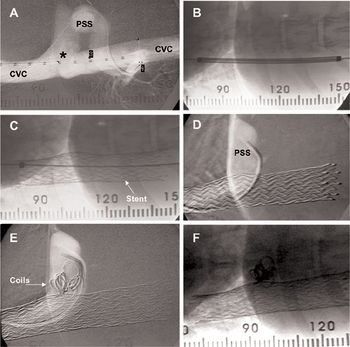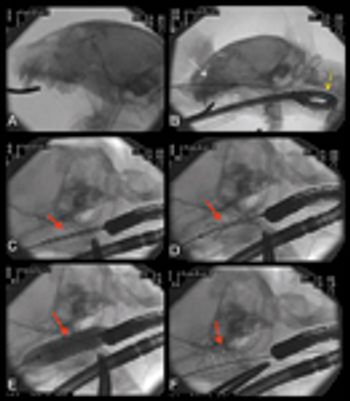
Make rounds with these veterinary specialists and residents for a complete picture of this neoplasia in dogs.


Make rounds with these veterinary specialists and residents for a complete picture of this neoplasia in dogs.

See how this minimally invasive procedure helped a Labrador puppy.

See how interventional radiography and endoscopy can help you identify and treat this abnormality in this case study.

Thickening of the intestinal wall is the most common ultrasonographic finding in inflammatory bowel diseases.

Biliary diseases in cats can be complex and challenging to diagnose.

The main purpose of this presentation is to evaluate the current place of abdominal ultrasonography in assessing intestinal tumors.

Ultrasonography became part of the routine diagnostic method to evaluate pancreatic disorders in small animals at our hospital.

For the purpose of this presentation, renal masses are defined as deforming (focal or diffuse) enlargement of the kidney with alteration of the normal renal architecture and/or shape.

In dogs and cats, the most common ultrasonographic feature of gastric tumors is marked thickening of the wall with complete loss of wall layering.

Ultrasonography is part of the routine diagnostic method to evaluate pancreatic disorders in small animals.

The bladder should be thoroughly scanned from left to right in the longitudinal plane and cranial to caudal in the transverse plane.

Radiographs are necessary prior to any US evaluation of the chest.

Overview of Imaging: what you need to know today to better serve your clients tomorrow.

All diseases known fit into a finite number of etiologies: Congenital, Degenerative, Developmental, Inflammatory, Metabolic, Miscellaneous, Neoplastic, Toxic, Traumatic, and Unknown.

Either you control the situation or the situation will control you!

The respiratory system extends from the tip of the nose to the diaphragm.

Disease processes are categorized into Congenital, Degenerative, Developmental Inflammatory, Metabolic, Neoplastic, Traumatic and Miscellaneous processes.

For visualization of soft tissue structures, radiology and ultrasound are complimentary.

The reader tip will help you protect your dental digital radiography sensors.

A recent study sought to establish the incidence of and risk factors for seizures after myelography with iohexol in dogs.

Our study shows that almost 20 percent more veterinary hospitals are using social media compared with last year. Find out how many of your colleagues are posting their way to a better practice.

This effective, minimally invasive outpatient procedure can offer immediate relief of stranguria.

Reading radiographs and crime scene investigation require similar skills. Both require identifying a victim, crime, considering the most likely suspects, looking for clues and then building your case or "telling the story". Sticking to these principles will result in a higher conviction rate.

Interpretation of radiographic findings must take patient age and breed into account. Both cats and dogs have typical or age acceptable juvenile and geriatric findings that should not be assumed pathologic. The following is a partial list of age and breed acceptable thoracic findings.

Clipping the hair over the last 2-3 intercostal spaces and extending the area dorsally is important for complete visualization of the liver, particularly in deep chested dog or dogs with small livers.